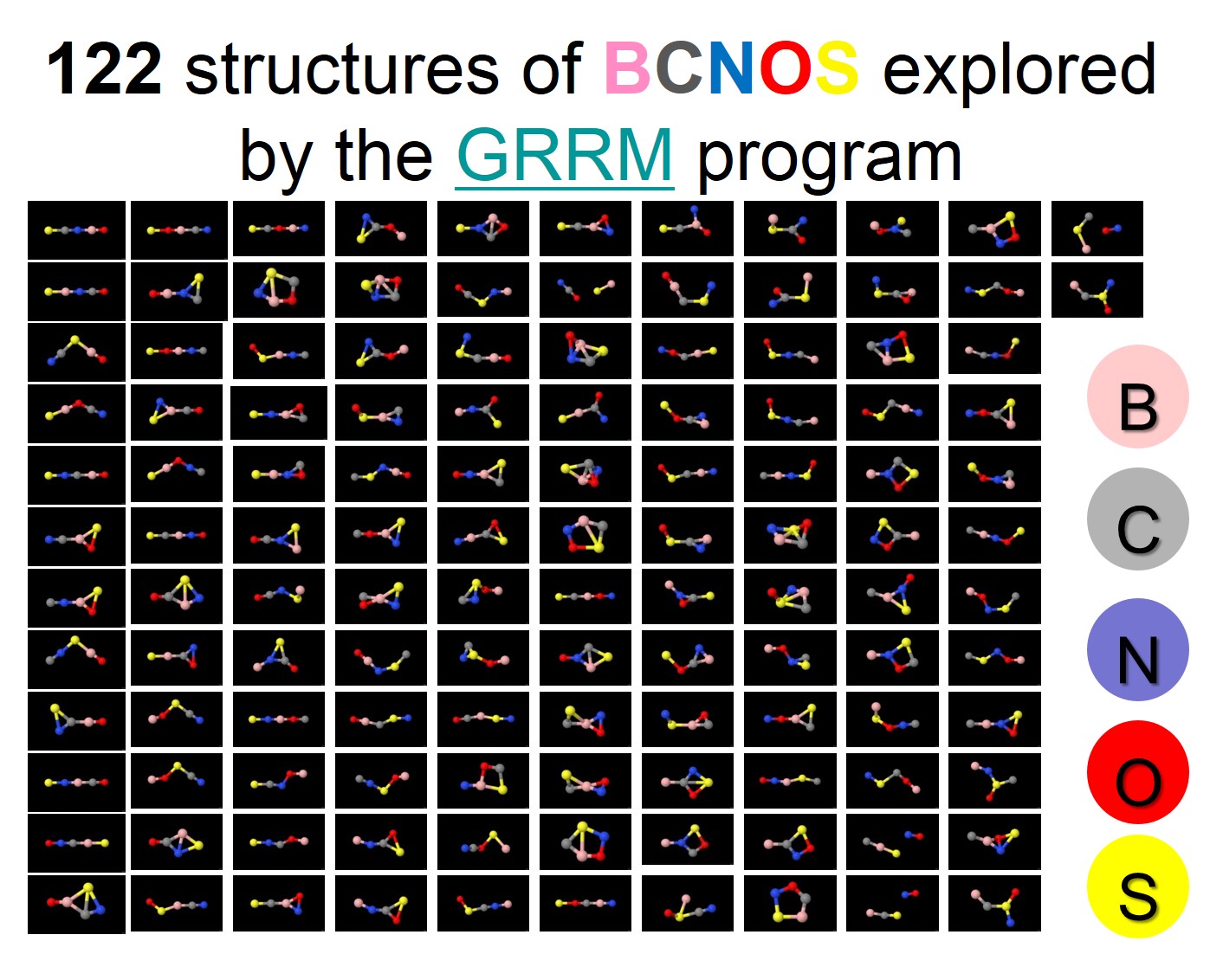.jpg)
l-ADDf Analysis : Very quick exploration becomes possible by Large ADD (LADD) following!
Low energy preferred search :
Although the entire search by GRRM generally requires long computation time, a limited serach by LADD considerably saves time for exploration. Many structures important in chemistry lie in the lower energy region. To realize a limited search preferring the lower energy region, the large ADD following (LADDf) method has been developed.Theoretical grounds of LADDf can easily be understood from the figure shown above. When potetial energy curves connecting the reactant EQ0 with the product EQ1 or EQ2 are compared, usually the lower product is linked with the closer or the lower TS. Such tendencies are familiar to chemists as Hammond postulate and Bell-Evans-Polanyi principle. It follows that in our ADD concept the larger ADD may lead to the closer (the lower) TS, which is possibly linked with the lower product. In the LADD option of GRRM, one may limit the number of the larger ADD path ways as LADD=n, where the n-th largest ADD are followed in the exploration. This limited search by LADD considerably shorten the time for exploration.
Performance of LADDf
Left figure below shows computation time as functions of the LADD parameter for three typical compounds. Even by LADD=10, computation time is reduced less than one half (0.5) with respect to the full search (no LADD limitation). At LADD=4, computation time is reduced to ca. 1/10.Right figure below shows percentages of limited search of EQ and TS with respect to the full search as functions of computation time ratios (limited / full). For EQ more than eighty percent of structures are explored safely even at the computation time of 1/10 with respect to the full search. For TS, the lost percentage becomes larger than the case of EQ, but the lower energy TS including the lowest can easily be searched even at the lower LADD. Thus, LADDf method can provide a very quick search of important chemical structures.
.jpg)
.jpg)


